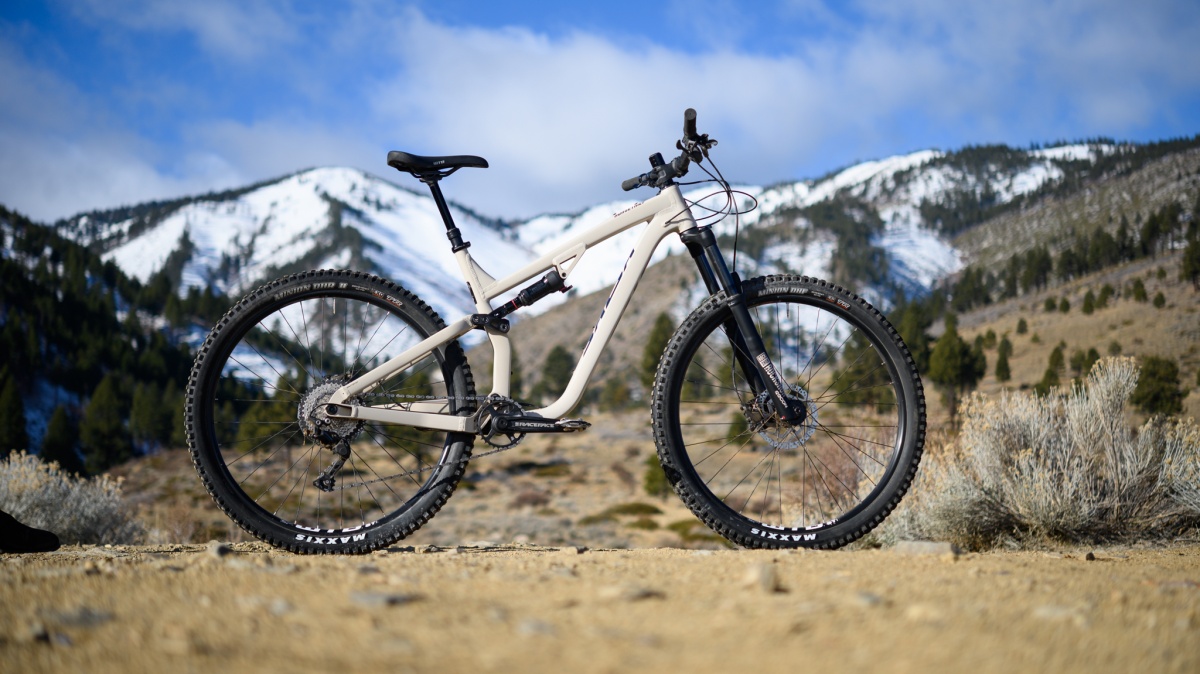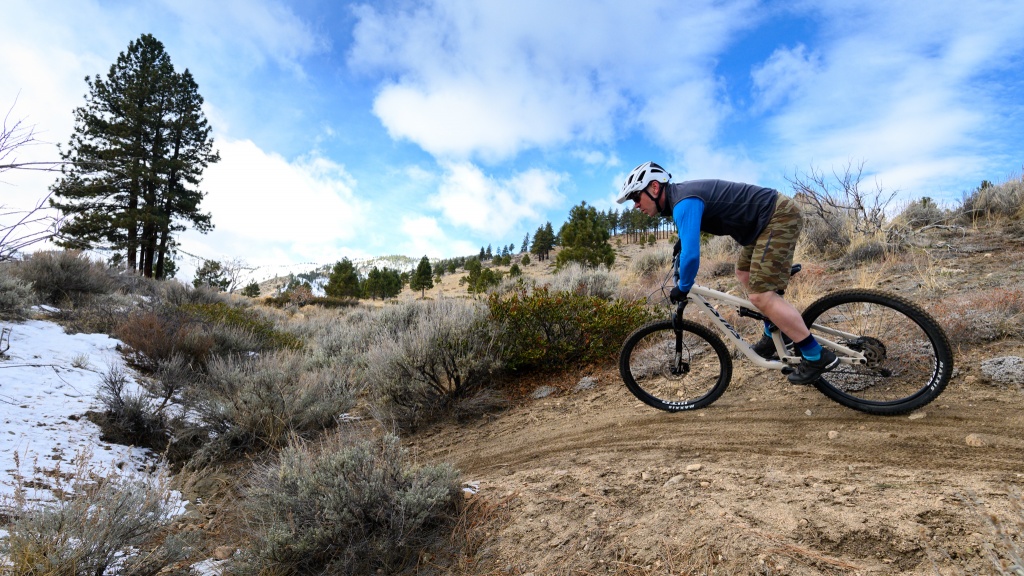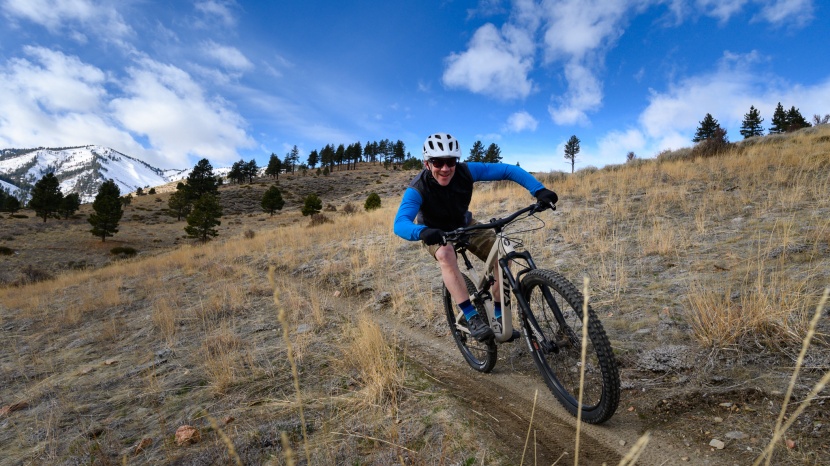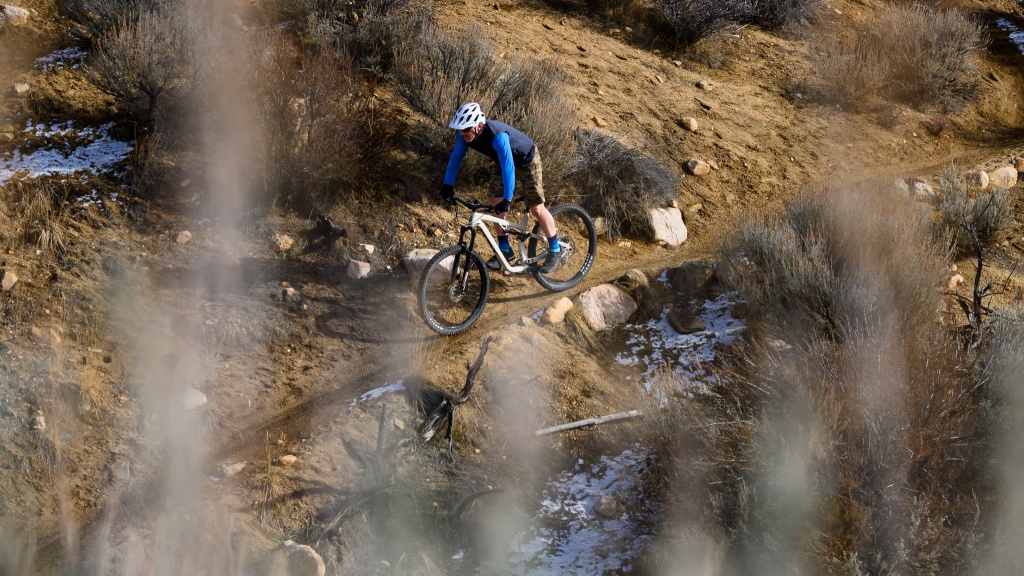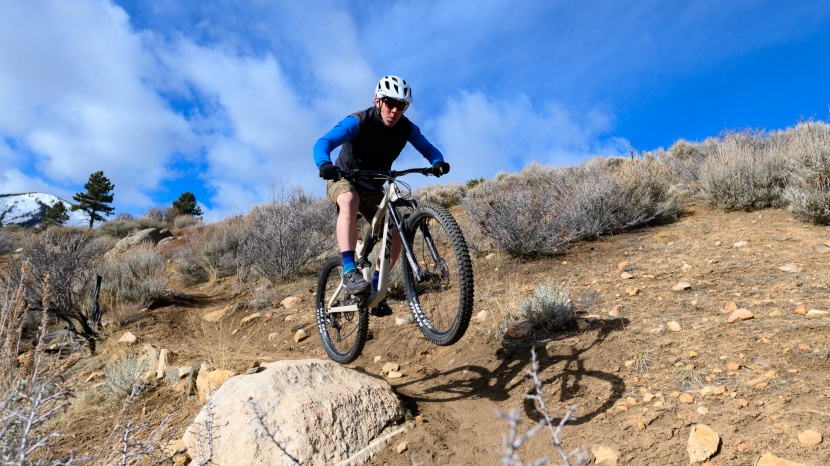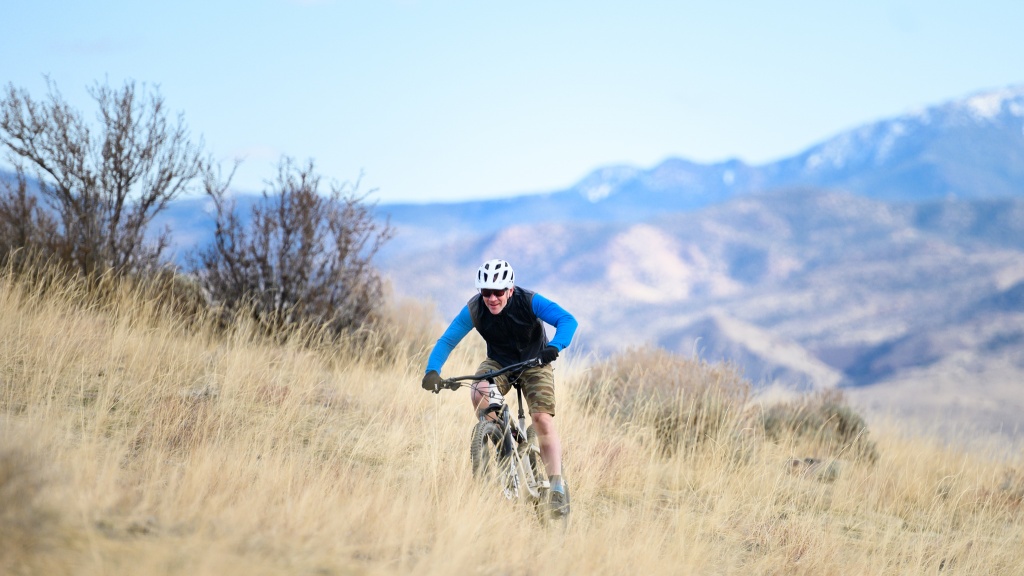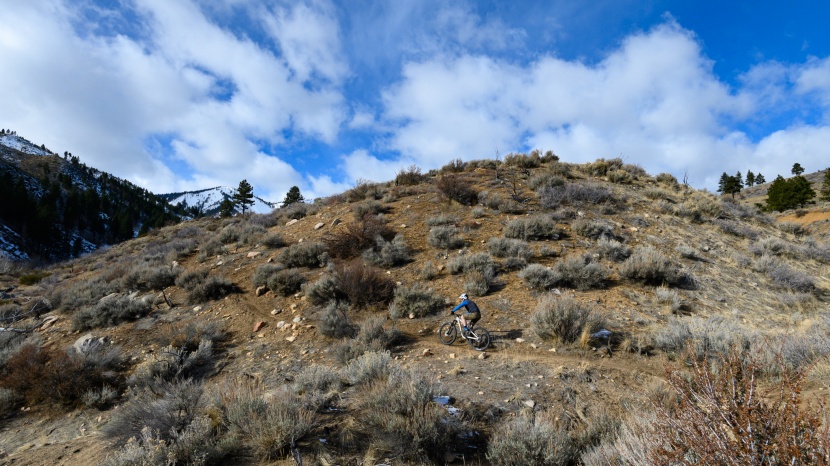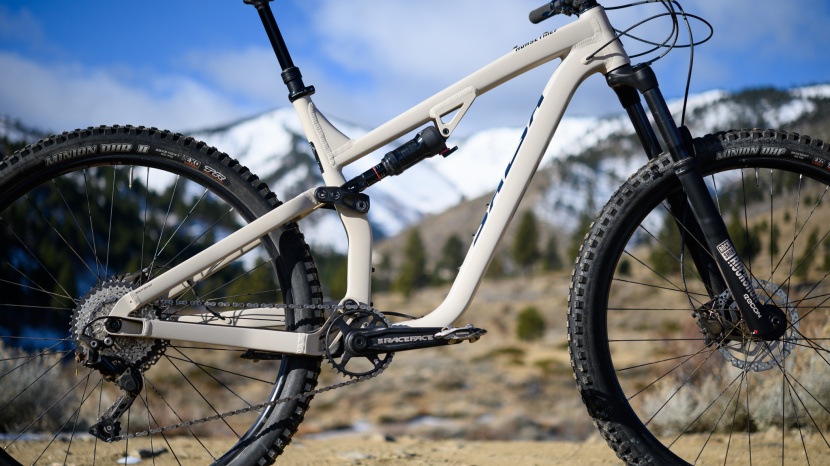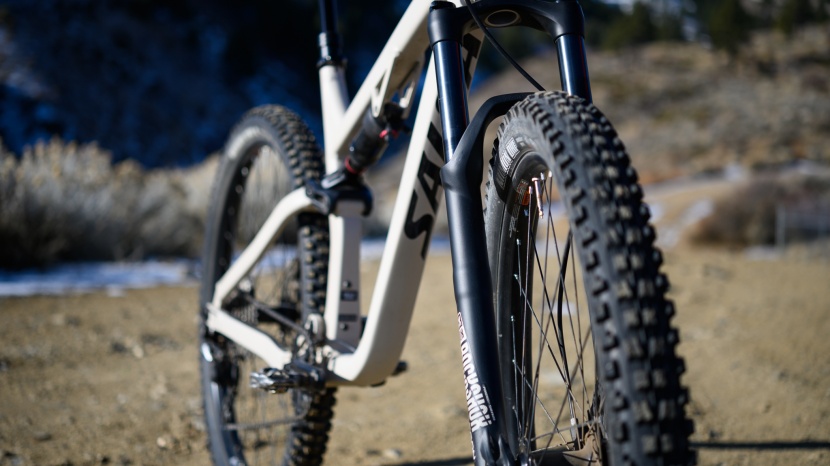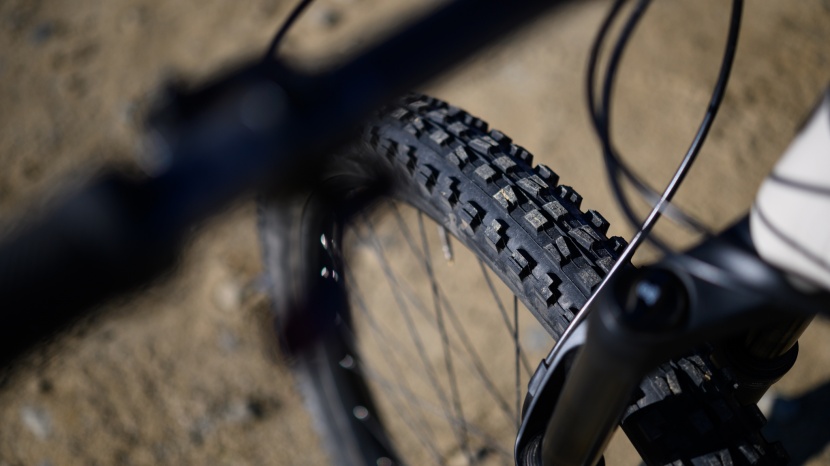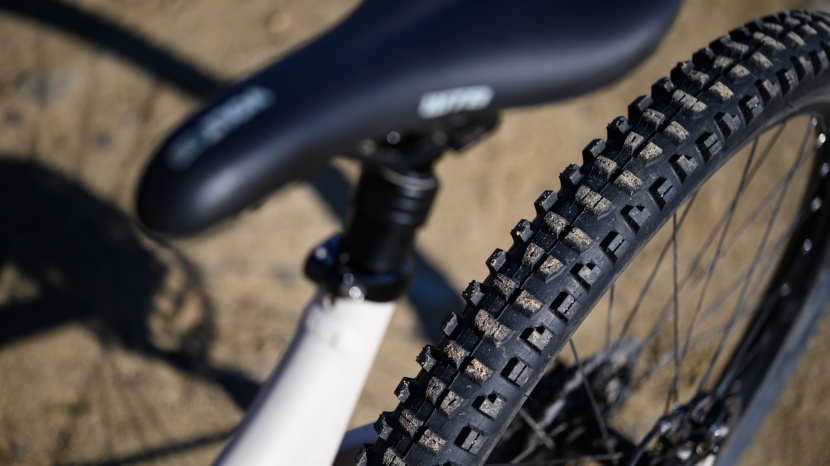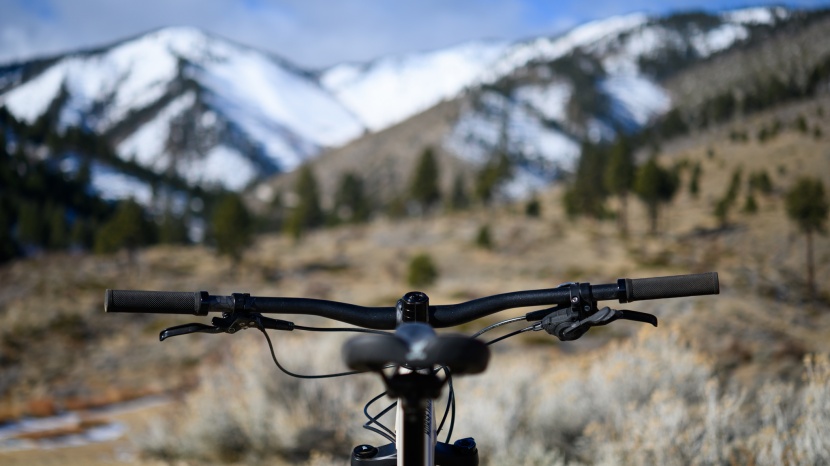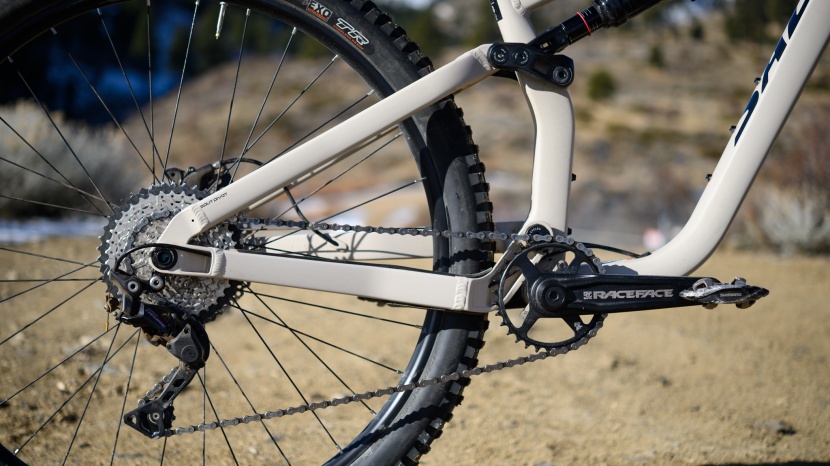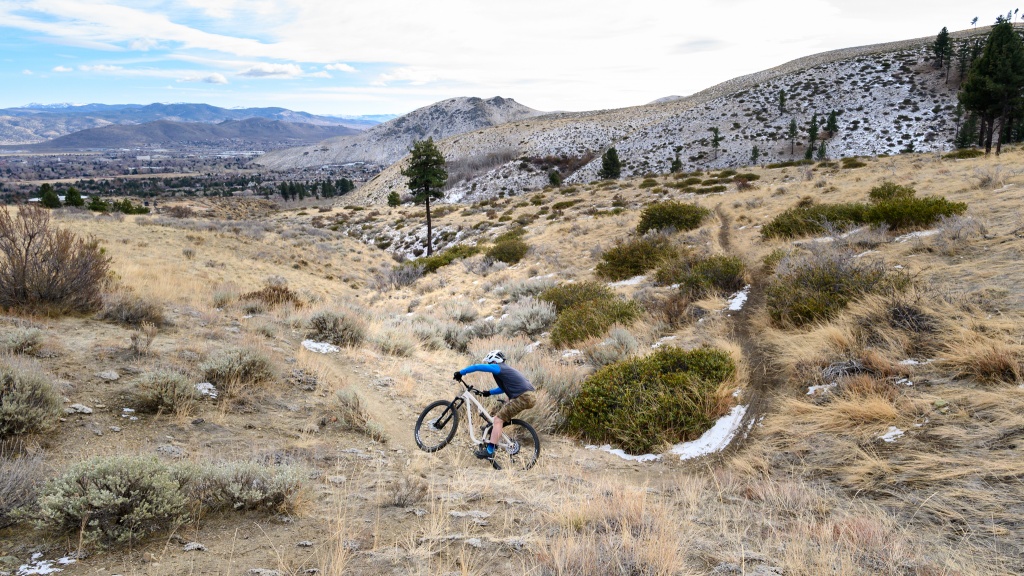Salsa Horsethief Deore Review

Our Verdict
Our Analysis and Test Results
Should I Buy This Bike?
If you're the type of rider who takes a more casual and easy-going approach to your riding, then the Horsethief Deore might be right up your alley. This bike performs very well at more moderate speeds and in less aggressive terrain with a somewhat conservative geometry. It's not racy, it's not especially playful, nor is it a downhill crusher. This is not to say that you can't get after it on the Horsethief, because you can, it just prefers a mellower pilot and terrain. It occupies that comfortable middle ground that we feel a lot of riders can appreciate. It's versatile and well-rounded when ridden with its limits of speed and terrain, and we feel it's a sensible entry-level and affordable option for less aggressive riders.
Fun Factor
Our testers all ride for the fun of it, and the consensus was that riding the Horsethief was generally a darn good time. The thing our testers thought was the most fun about this bike was its predictable, mild-mannered, and even temperament. If the Horsethief was your friend at your party, it wouldn't be the one who gets too drunk and starts jumping over the bonfire or punching holes in your drywall for no reason. No, this bike is like a friend who tells good stories around the campfire and maybe plays some good tunes on the guitar but doesn't get mad if they aren't the center of attention.
It depends on how you define “fun” on a bike, but the Horsethief's middle-of-the-road-ness is one of its greatest strengths. It's not the best or worst at anything; instead, it does everything relatively well. It may not be the most playful nor the hardest charging bike we've tested in this price range, but it was consistently solid when ridden within its preferred moderate terrain and aggressiveness range. This bike is an absolute blast to ride on mellower trails and stands up pretty well on rougher and steeper terrain. We feel this bike will be the most fun for people who aren't trying to race their friends up or down the hill and instead have a “just for the fun of it” approach.
Downhill Performance
Salsa isn't exactly known for making hard-charging trail bikes, and the Horsethief is an example of a mild-mannered and user-friendly short travel model. It's got somewhat conservative geometry by today's standards, and while it doesn't strike us as an aggressive shred sled, it rarely felt overwhelmed when kept within its limits. Testers found this bike easy to get along with, comfortable, and adept at moderate trail riding when not pushing the envelope of speed or terrain. This is a versatile option for the rider who isn't pushing their limits on descents and is simply riding for fun.
The Horsethief sports 120mm of rear-wheel travel paired with a 140mm fork, agreeable numbers for a huge number of riders and terrain. The Split Pivot suspension design works well, and this bike has impressive small bump compliance and a nice progressive ramp-up at the end of its travel. Despite having just 120mm of travel, testers didn't report any harsh bottom outs unless they were really asking for it. It's supportive enough in the mid-stroke to have some platform to push off of when you're looking for a little pop or when you get on the gas to accelerate out of corners. The Recon fork works okay and it's easy enough to make the suspension feel relatively balanced front and rear. Like any Recon fork, however, it can feel a little flimsy and harsh on bigger hits or rough terrain at speed.
The geometry of the Horsethief wouldn't be considered progressive in this day and age and instead feels a little conservative compared to some of the other bikes in this review. This is one of the reasons this bike prefers a mellower approach and more moderate terrain. Its got an 1190mm wheelbase and generally feels stable at speed while remaining quite maneuverable. The 67-degree head tube angle also helps in giving this bike quick and somewhat sharper front end handling, though it feels a little steep when rolling into steeper terrain, especially when compared to slacker bikes. The 453mm reach measurement is also on the moderate side, and this results in a more neutral and less aggressive body position. You can ride just about anything on this bike, but testers found themselves toning it down a little bit in steep and rough terrain compared to harder-charging competitors with longer and slacker geometries. Cornering performance was relatively solid thanks in large part to a quality tire specification and a wide handlebar for muscling this bike around.
The Horesthief Deore has a budget-minded build that is relatively on par with most other bikes in this price range. One of the best aspects of the build is the wheels and tires which help to greatly enhance this bike's performance on the descents. The wide WTB rims pair very nicely with the proper width Maxxis Minion DHF/DHR II combo to give this bike predictable and confidence-inspiring braking and cornering traction. Salsa did their best to provide a modern cockpit setup, and while most of our testers felt the 800mm handlebar was a little too wide, it does allow for a wide stance and plenty of leverage for steering and leaning this bike into corners; plus it can easily be trimmed to your preferences. The inclusion of a dropper post is nice, but it would amazing if it had more than 130mm of travel on a large frame. The Shimano MT200 brakes get the job done, but they feel a bit underpowered and the long throw levers just feel a little cheap.
Climbing Performance
The Horsethief isn't a standout on the climbs, but its performance is agreeable and respectable. Much like its downhill performance, it prefers a mellow approach and gets the job done without much to complain about. It's not especially racy or fast, but it's relatively comfortable, maneuverable, and pleasant on the uphills.
The Horsethief's somewhat conservative geometry comes into play here again on the climbs. The slightly shorter reach measurement gives the rider a non-aggressive and somewhat upright body position. The 73.4-degree seat tube angle is slack by today's standards and definitely contributes to the relaxed vibe with the rider's weight a little further back. It doesn't feel egregiously slack, but it certainly doesn't line the rider up for the most efficient power transfer or for attacking technical sections of trail. This bike feels best when seated and climbing and remains relatively maneuverable thanks to the moderate length wheelbase and steeper head tube angle.
The Split Pivot suspension design performs admirably when climbing and provides a relatively supportive seated pedaling platform and excellent traction. Out-of-the-saddle efforts result in a fair amount of pedal bob, and this bike feels best when seated and grinding away the vertical. Our testers were thankful for the compression damping switch, almost a lockout on this shock, for extended paved or fire road climbs. The component spec generally works well on the climbs, especially the Maxxis Minion DHR II tire, which hooks up well and provides good climbing traction in most conditions. The Shimano Deore 10-speed drivetrain works fine, but the reduced range compared to 12-speed options is noticeable on long or steep climbs.
Build
The Horsethief Deore is built around a 6066-T6 aluminum frame with 120mm of rear suspension. Salsa has employed itsSplit Pivot rear suspension system to control the 120mm of rear-wheel travel. Salsa's Split Pivot design is quite similar to Trek's ABP suspension in that both systems have a pivot around the rear axle that is intended to allow for the suspension to move freely regardless of braking forces. The Horsethief comes with a 140mm travel fork, flip-chip adjustable geometry, and the ability to fit two full-size water bottles within the front triangle. Salsa has chosen to go with the newer Super Boost 157 rear axle spacing on this frame.
The suspension package on the Deore build we tested is about par for the course for bikes in this price range. Its performance is by no means excellent, but it is far better than what we experienced on bikes in this price range in the past. The 140mm RockShox Recon RL fork worked fine and offers an adjustable air spring, rebound adjustment, and a lockout. Being a low-end model, this fork can be overwhelmed, and it can feel a little flimsy when the going gets really rough or during high-frequency hits. The RockShox Deluxe RT rear shock worked reliably, and it has a rebound adjustment as well as a compression damping switch for use when climbing.
Salsa didn't play any games when choosing the wheels and tires for the Horsethief Deore. The WTB ST i29 TCS wheels are tubeless-ready with a 29mm internal rim width. The Maxxis Minion DHF 2.5" EXO front tire and the Maxxis Minion DHR II 2.4" rear tire are an excellent combo and a tester favorite. This tire setup is beefy and ready for anything, plus it provides predictable and confident cornering, braking, and climbing traction.
The cockpit setup of the Horsethief is okay, but it left a little to be desired. Salsa makes its own handlebars and stems, and it puts a short Salsa Guide stem and an 800mm wide Salsa Rustler bar on the front end. The 800mm wide bar felt awkwardly wide to most of our testers, though they can easily be trimmed down to suit your preferences. At the back of the bike, Salsa put a comfortable WTB Volt Sport saddle mounted to the top of a TranzX dropper seatpost. We're happy that they put a dropper on this bike, but the 125mm travel length definitely felt a bit too short for our 6-foot-tall testers on the size large frame.
The Deore build we tested comes with, not surprisingly, a Shimano Deore drivetrain. While we can't complain about the reliability or shifting performance of this drivetrain, it only offers 10-speeds and we've become quite used to 11 and 12-speed options at this point. The 32-tooth chainring is paired with an 11-42-tooth cassette that works well in most situations but had our testers wishing for a couple more low gears on long, steep climbs. Slowing and stopping the Horsethief is tasked to a set of Shimano MT201 hydraulic disc brakes, the same brakes found on most of the other models in this review. These brakes are all right, though they feel a little underpowered and have cheap long-throw levers.
Value
At a retail price of $2,999, the Horsethief Deore 12-speed isn't incredibly competitive, but we see it priced much lower at most retailers. Under $2500 this bike becomes compelling as we were generally impressed with its performance on more moderate terrain.
Conclusion
Easy going yet still plenty capable, the Horsethief Deore has a lot going for it. While it may not be the best, either up or down, it is pretty darn good at just about everything. Our testers enjoyed this bike the most on rolling moderate terrain with only just small doses of rock and steeps. We feel the Horsethief is a good value and a great option for riders who aren't necessarily pushing their limits and are simply out riding for the fun of it.
Other Versions
Salsa makes the Horsethief in both aluminum and carbon fiber in a total of four different builds. The Deore build we tested is the least expensive of the two aluminum-framed models.
The Horsethief SLX retails for $3,799 and comes with its namesake SLX drivetrain and an otherwise nearly identical build to the model we tested.
There are two carbon framed models to choose from. The Horsethief C SLX retails for $5,299 and comes with a RockShox Pike fork, SLX drivetrain, and brakes. The Horsethief C XT goes for $6,899 and comes with a RockShox Pike Ultimate fork, an XT kit and Reynolds carbon wheels.

